Special Report:
SINGAPORE – A HIGH-DENSITY CITY WITH SPORTING CHARACTERS
Chapter 3: City parks
A sizeable portion of Singapore’s urban land area has been allocated to public park development, highlighting the relevance of environmental and recreational aspects in the city’s long-term planning strategy and demonstrating the philosophical influence of European and North American urban planning features.
Multi-purpose-built urban parks of various sizes have become a key characteristic of this ‘Planned City’: apart from 271 small-sized neighbourhood parks, Singapore also offers a generously high number of 59 medium- and large-sized regional parks, according to the latest National Parks figures. There is no hyperconcentration of parks in any particular territory of Singapore; that is, they are evenly scattered throughout the city-state, providing their local residents with various temporary retreat options from the city’s notoriously work-centric lifestyle.
Thanks to their partially integrated recreational and sporting facilities the large city parks could be regarded as one of the city’s greatest assets. For the most part they contain designated trails for running, cycling and inline skating, which are often linked to other parks via park connectors (see ‘Park Connector Network’). Numerous outdoor fitness stations are installed in various parts of the parks, too. In short, sports and recreation infrastructure is a fixed feature of Singapore’s parks.
Overall, there are a number of superb parks, differing in size, tropical tree coverage, panoramic view and range of amenities. But perhaps the most impressive city parks – and not only from the sporting and active lifestyle perspective – are the East Coast Park, Bishan-Ang Mo Kio Park, Bedok Reservoir, MacRitchie Reservoir Park and the Bukit Timah Nature Reserve (by definition, though, this nature reserve is not a park).
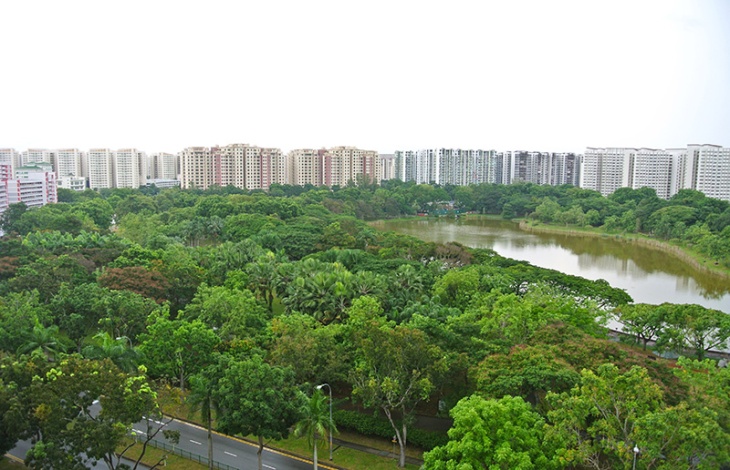
Medium-sized parks in Singapore, such as the Punggol Park, are typically embedded into the city’s residential districts.
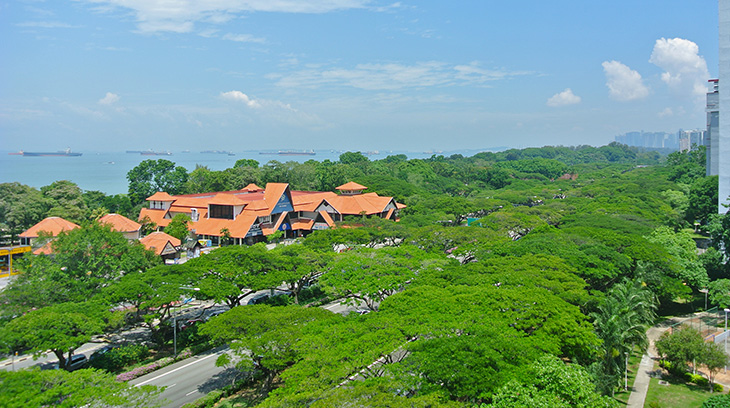
The East Coast Park is the largest and the most popular recreational green space in Singapore.
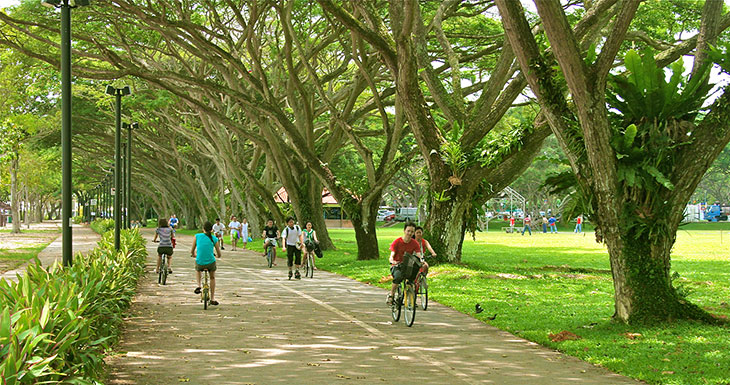
Shaded by tropical trees the 10-km long bicycle and running trails in the highly popular East Coast Park offer the much-needed protection from extreme ultraviolet (UV) radiation that is present in Singapore all-year-round. The trails connect the eastern districts with the CBD.
With an area of 210ha the East Coast Park is considered the largest public park in Singapore. Ever since it was created on reclaimed land in the late 1970s, this city park located along the south-eastern shoreline has served as the city’s main recreation and leisure hub – in part, thanks to its man-made beaches. Over the years it has also been beautified with large numbers of tropical trees. The park contains a designated 10km-long paved track, which has become the prime locality for avid joggers, walkers, cyclists and inline-skaters. Other free-of-charge sports and exercise amenities located in this park include a skateboard area, beach volleyball court and several outdoor fitness stations (charges apply for the utilisation of rental bikes, futsal fields and the indoor mini-golf course). By offering various indoor and outdoor dinning options as well as large numbers of BBQ facilities, the East Coast Park has also established itself as a culinary and social destination during late evening hours.
The East Coast Park is particularly popular with residents living in the nearby affluent district of Marine Parade. Visitors who do not reside within walking distance to the park, on the other hand, usually have to drive or take one of the public bus lines, as this large city park is not accessible by train. This is about to change, however. According to the government’s plans, a new East Coast MRT train line will be operational by 2023. This crucial accessibility improvement could presumably become a catalyst for some overdue structural changes to the park itself, further boosting its reputation as the city’s active and sporting lifestyle hub. The park’s low-demand amenities and various shabby-looking buildings, for instance, could make space for more beach-oriented recreational facilities that would woo the steadily growing number of local sports enthusiasts to visit this park more frequently.
Also, it is not clear why some parts of the East Coast Park are not attuned to the city’s warm climate and to the potentially profitable market demands. The existing indoor mini-golf course and the indoor soccer fields, for example, do not provide local residents with an experience that reflects the uniqueness of this locality. By contrast, popularisation of beach-based activities such as beach volleyball, beach soccer, beach badminton or beach table tennis could possibly help create a very distinctive Singapore-style sporting culture that could be emulated across other shore-based city parks in Singapore and beyond (please read more on this topic in the chapter ‘Towards Creating a Distinctive Sporting Lifestyle City Identity’).
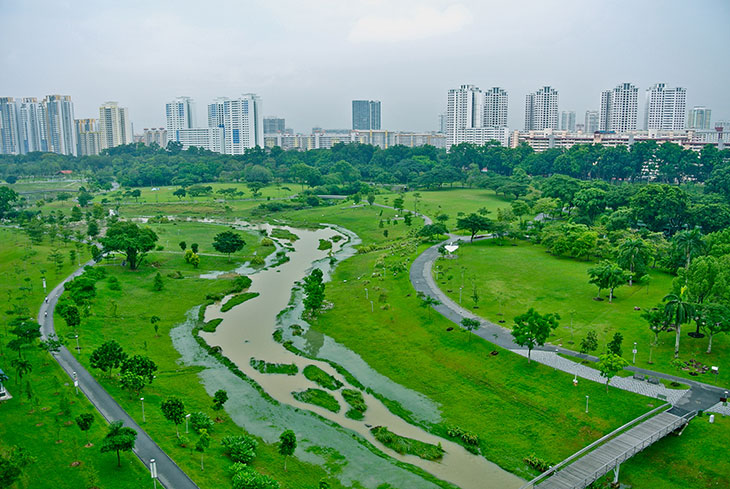
The large Bishan Ang Mokio Park acts as a buffer zone between two residential districts, Bishan and Ang Mokio.
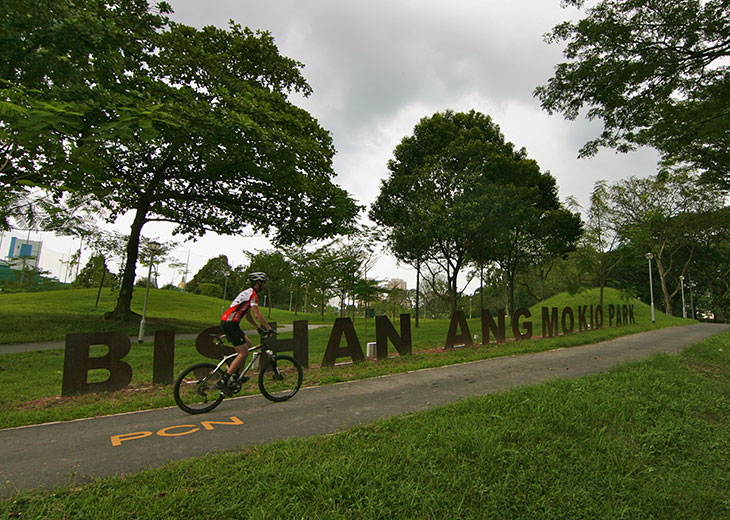
Located in the geographic centre of the island the Bishan Ang Mokio Park has become a popular destination for recreational cyclists who can easily access this park via the city-wide Park Connector Network.
Bishan-Ang Mo Kio Park, another remarkable urban park area, is located right in the geographical centre of the island. Numerous paved tracks criss-cross the park, with the longest loop reaching approximately 5.5km. This city park also provides a couple of outdoor gym areas containing a handful of standard-built fitness stations. One of the greatest assets of the park is the long-distance track connectivity with the CBD. Its proximity to the Bishan sports complex is a boon, too.
The Bedok Reservoir includes an artificial lake, which is encircled by one of the city’s finest gravel trails for running. In addition, a concrete track for cycling runs alongside much of the 4km-jogging loop. A small number of outdoor fitness stations are also installed along the routes, and sporty visitors can take a refreshing shower at the northern car park area. The weakness of this park is its relative isolation, as no commercial site and no location of general interest exist nearby the park area. It is possible, though, that the recently completed Downtown MRT train line will in future lead to greater numbers of sporty visitors.
The MacRitchie Reservoir Park is located in the geographic centre of Singapore. It is part of the large Central Catchment Nature Reserve, which covers 4% of the city’s land area. Apart from available water sports options such as canoeing and kayaking, this park offers numerous trail loops for walkers and joggers, with the longest route reaching 11km. Additionally, two generic outdoor fitness areas are located along the southern shore of the reservoir.
Bukit Timah Nature Reserve is one of the few remaining primary rainforest areas in Singapore. It is slightly hilly, with the Bukit Timah summit reaching 163 metres above sea level. Over the years this Nature Reserve has emerged as a popular leisure destination for the city’s residents and tourists alike, who value this park for its hilly and leafy terrain (and who want to get a glimpse of the legions of cheeky macaques). The park offers numerous paved and unpaved hiking routes with constantly changing levels of slope steepness. In the small-sized Hindhede Nature Park (located next to the main car park) a limited number of outdoor fitness stations are also installed. For mountain-bike riders there is a 7km-long designated trail encircling the entire reserve area. To comply with the Association for Southeast Asian Nations (ASEAN) Heritage Parks requirements (this nature reserve was added to the ASEAN Heritage Parks list in 2011), major trail restoration works have recently been carried out.
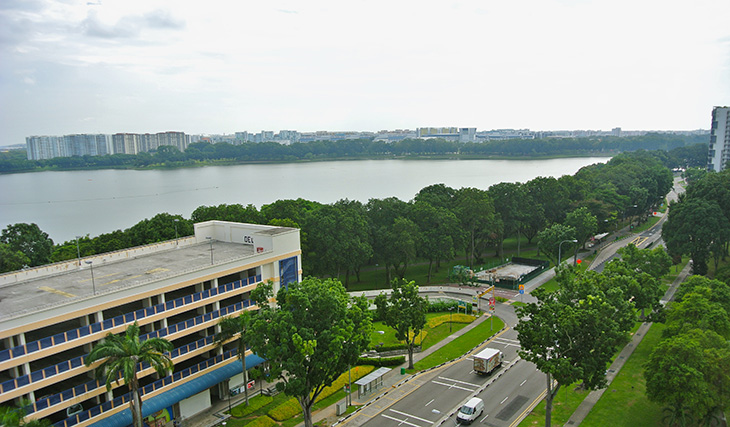
For residents who live in the northern parts of the Bedok district and the western parts of the Tampines district the Bedok Reservoir Park offers excellent running options. The 5 km gravel-jogging trail encircles the man-made reservoir.
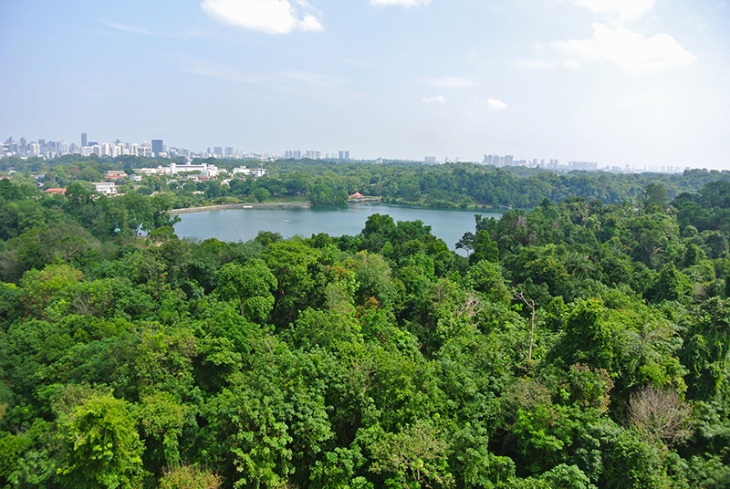
The leafy MacRitchie Reservoir Park (Central Catchment Nature Reserve) is Singapore’s oldest reservoir and a popular location for outdoor sporting lifestyle.
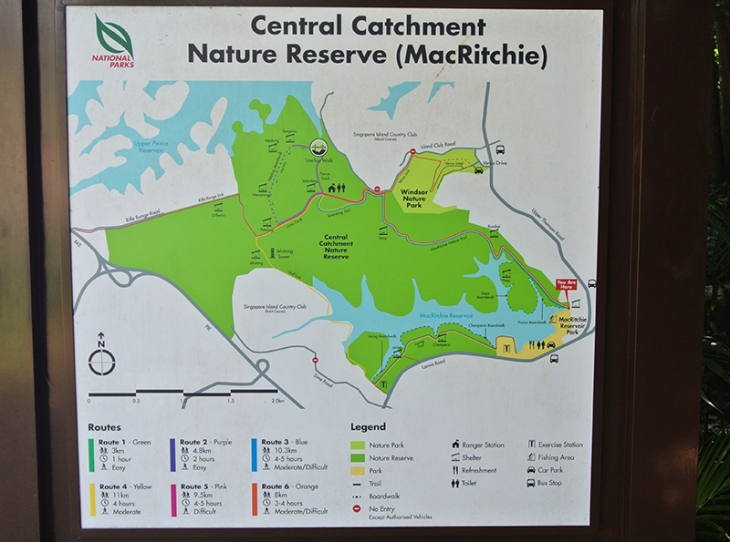
The routes around the MacRitchie Reservoir offer the best trails for long-distance walking and running in Singapore.
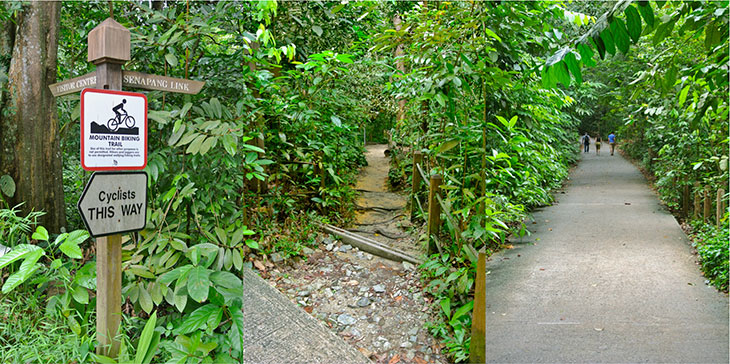
No other park area in Singapore can match Bukit Timah Nature Reserve’s density of tropical forest and its variety of trails. The recently constructed Downtown MRT train line has at last improved the accessibility to this large recreational space located between the districts of Bukit Panjang and Bukti Timah.
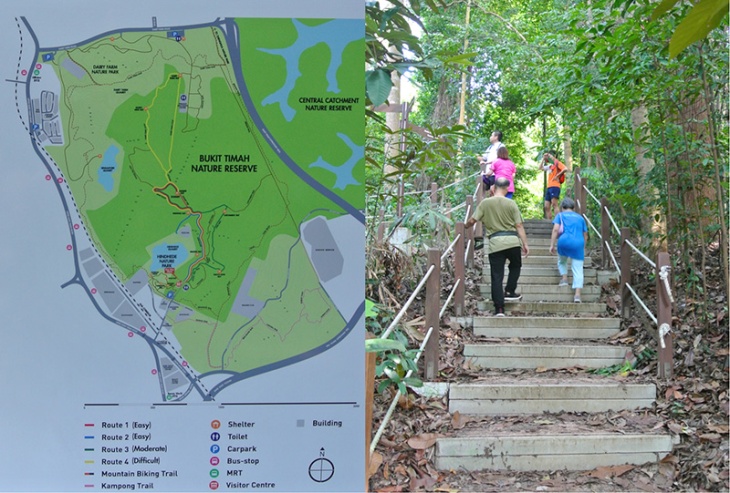
The hilly Bukit Timah Nature Reserve offer trails for people with various physical capability levels.
Due to its dense tropical vegetation and its proximity to the large central water catchment area very high humidity levels prevail in this nature reserve at all times, making any type of physical activity somewhat more challenging than in built-up areas in Singapore. Hence, visitors to the Bukit Timah Nature Reserve usually experience high levels of perspiration and some individuals may even suffer from breathing difficulties (for more information on climate conditions in Singapore, please read the chapter ‘ “No choice” – Sporting in Tropical Climate’).
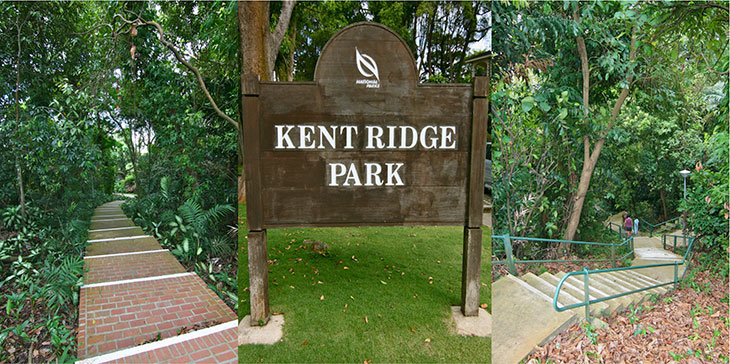
The Kent Ridge Park is located close to the world-renowned National University of Singapore. The park’s hilly terrain enables sporty visitors to carry out high-intensity walks and runs.
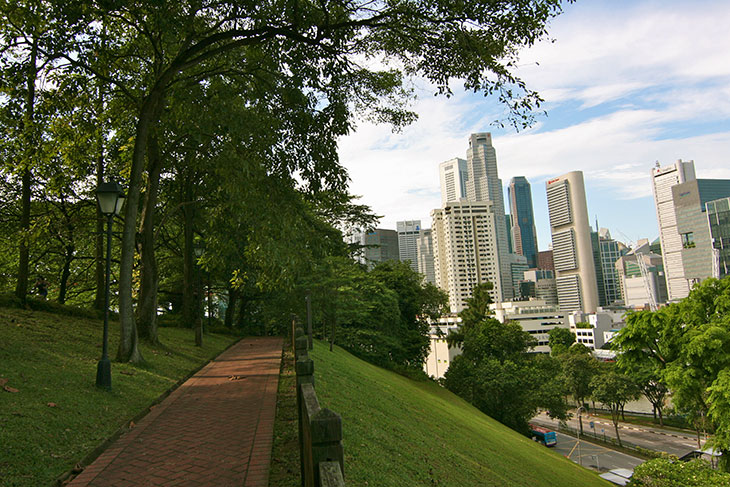
The medium-sized Fort Canning Park is located close to Orchard Road, a busy shopping boulevard in the central district. The beautification factor of this park area, its hilly terrain and its 2-km trail loop make it a pleasant location for brief high-intensity walks.
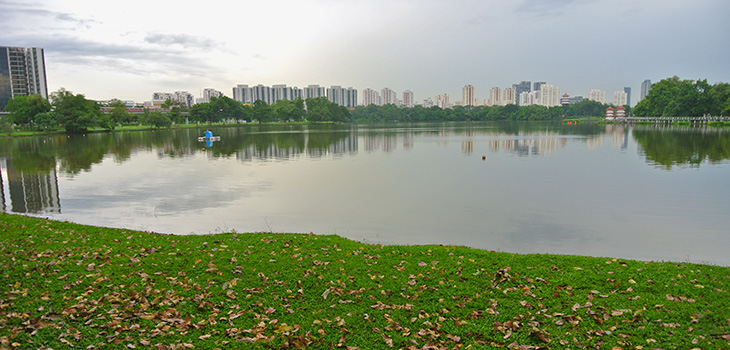
The Jurong Lake Park is the largest outdoor recreational area in the western districts.
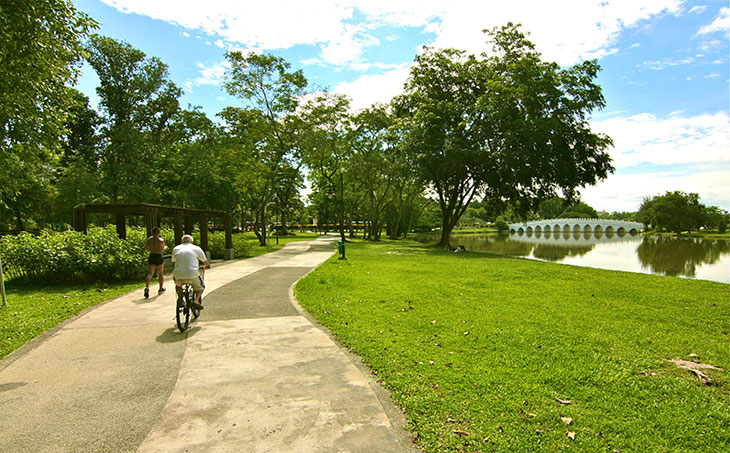
The Jurong Lake Park area comprises of a 6 km trail that encircles the artificial lake, the Chinese and Japanese Gardens. The western zone of the lake is currently closed to the public due to major redevelopments of this entire area.
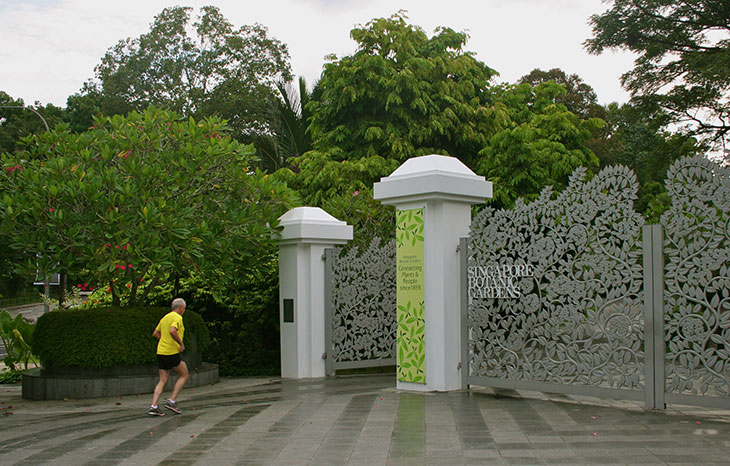
Located between Holland Road and Bukit Timah Road the British-style Botanic Garden is a preferred walking and running choice for affluent Caucasian expatriates, diplomats, business folks and well-to-do international tourists. The longest trail loop reaches 7km.
Although Singapore’s large city parks are highly popular with physically active residents, the notion still prevails, in particular among some local policymakers, that the residents regularly enjoy their leisurely stroll in parks while looking enthusiastically at trees, plants and birds. This view seems inaccurate. Rather, most large parks in Singapore would display a disturbing image of emptiness, if it weren’t for the cyclists and joggers who appreciate their pleasant escapes from the concrete landscape.
In order to stimulate new thinking into how to make the city parks even more appealing to sporty Singapore residents and to further develop its emerging urban sporting culture, a couple of suggestions should therefore be made here. To begin with, some of the existing parks would benefit from structural changes. To attract more sporty visitors, a variety of small-sized outdoor sporting grounds could, for instance, be incorporated into the present park landscape (this concept should be limited to selected parks, however). By applying the aspects of multifunctionality, centralisation, compactness and diversification, the prime areas within such selected parks could be transformed into ‘Sporting City Parks’. This would potentially lead to a far livelier park atmosphere and to a changing nature of the city parks’ sporting lifestyle. For this to happen, the current conservation-centric park land-use regulations would need to be re-evaluated and modified.
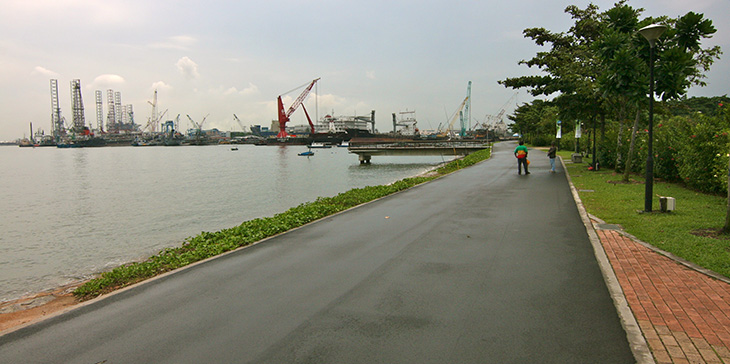
The West Coast Park is the only public park along the city’s lengthy south-western coast. This 2.5km long park is sandwiched between the world’s second-biggest port and a large industrial zone, and it offers a rather uninspiring view on the man-made Jurong Island industrial park complex.
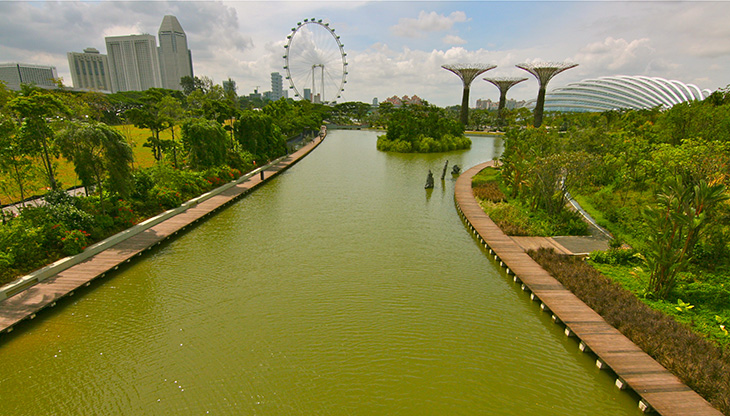
Gardens by the Bay is one of the key features of Singapore’s international city branding initiative. In terms of sporting activities, however, it is one of the most restrictive green spaces in the entire city. For instance, cycling is not permitted and joggers usually avoid this pompous garden area.
Yet turning city parks into monofunctional sporting zones is hardly a reasonable approach. It goes without saying that city parks fulfil a universal function and must appeal to a broader audience; that is, they should reflect diverging philosophies and collate diverse aspects so as to satisfy the needs of horticulturists, fresh-air and quiet space seeking residents as well as sports enthusiasts. Thus it needs to be underlined that only designated areas in the most suitable city parks are to be considered for such a radical transformation (i.e., ‘Sporting City Parks’), thereby ensuring the co-existence of all relevant park components.
Furthermore, some serious thoughts could be given to creating large numbers of outdoor shower facilities, small security lockers and changing rooms in the central activity areas of large city parks. They could be added to the already existing restrooms near the parks’ car parking areas (this has proved to be a highly successful concept in the East Coast Park).
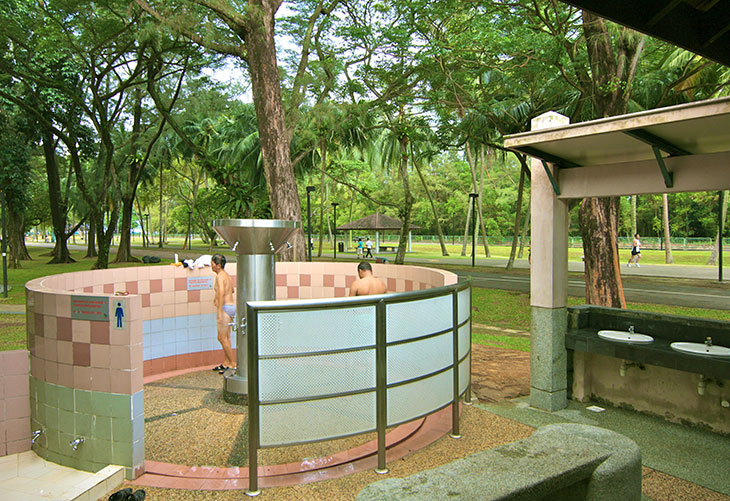
Convenient outdoor shower facilities are provided in the western area of the East Coast Park, near the Tanjong Katong Flyover.
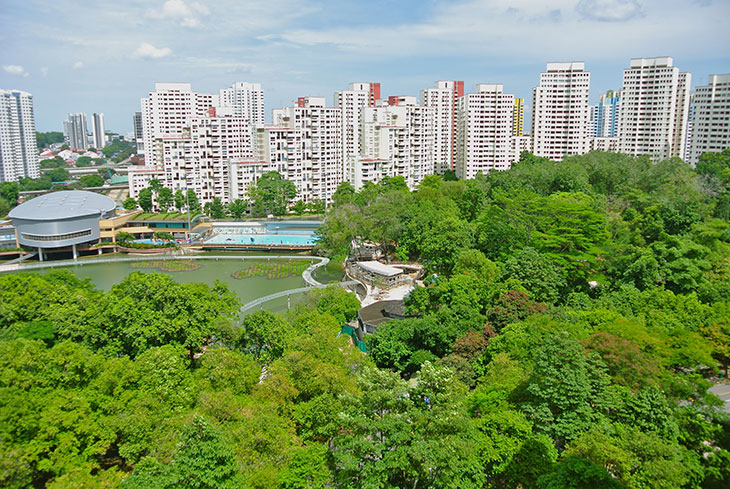
A possible model for a ‘Sporting City Park’? In the north-western district of Bukit Panjang the Senja-Cashew community club with its outdoor swimming pool, indoor sports hall for badminton and table-tennis, indoor gym facilities and dance studios is located next to the mid-sized Bukit Panjang Park.
Given the rising popularity levels of urban running among local residents and the inevitable trend towards ageing population (the proportion of Singapore residents who are 60 years old and above has over the years skyrocketed to almost 20%), the time has perhaps come to review the existing park trails, too. For instance, in the near future more age-suitable trails should be offered in some of the large parks; the demand for running trails will keep growing, as a substantially large chunk of the current generation of avid, middle-aged runners is expected to continue pursuing this sporty habit into their older age. At present, most joggers have no other choice but to carry out their running on hard-surfaced (paved) trails. Thus it would be critical to design softer, unpaved surfaces for joggers, which could help reduce the cumulative impact of running on hip and knee joints. It is needless to say that such gravel trails will need to weather high volumes of tropical rain.
The gravel trail in the Bedok Reservoir is a formidable example of an age-friendly and weatherproofed running trail. Similar trails could be easily created in other large city parks, as no major revisions to the present land-use planning structure of the parks would be required for such minor adjustments: the future gravel trails could, for instance, be created along the existing paved tracks. If proven successful, the same concrete- and gravel-sharing design could also be adopted in some parts of the park connector network (for more information on park connectors, see chapter ‘Park Connector Network’).
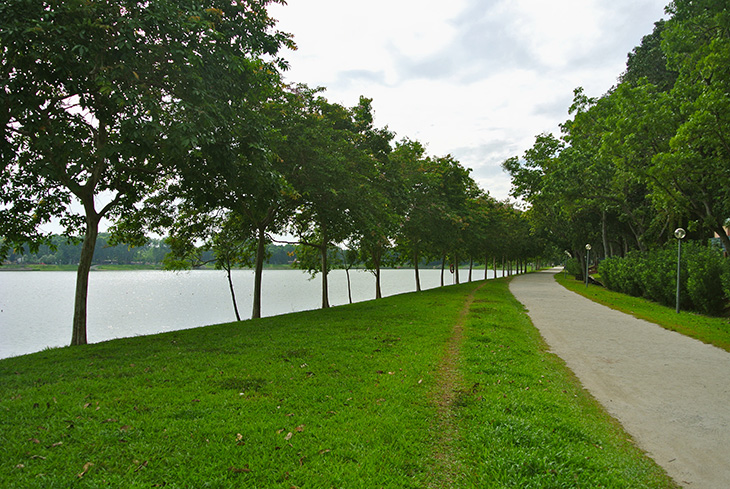
The 5 km gravel running trail in Bedok Reservoir Park is the only of its kind in Singapore.
>> READ next chapter “Park connector network”
